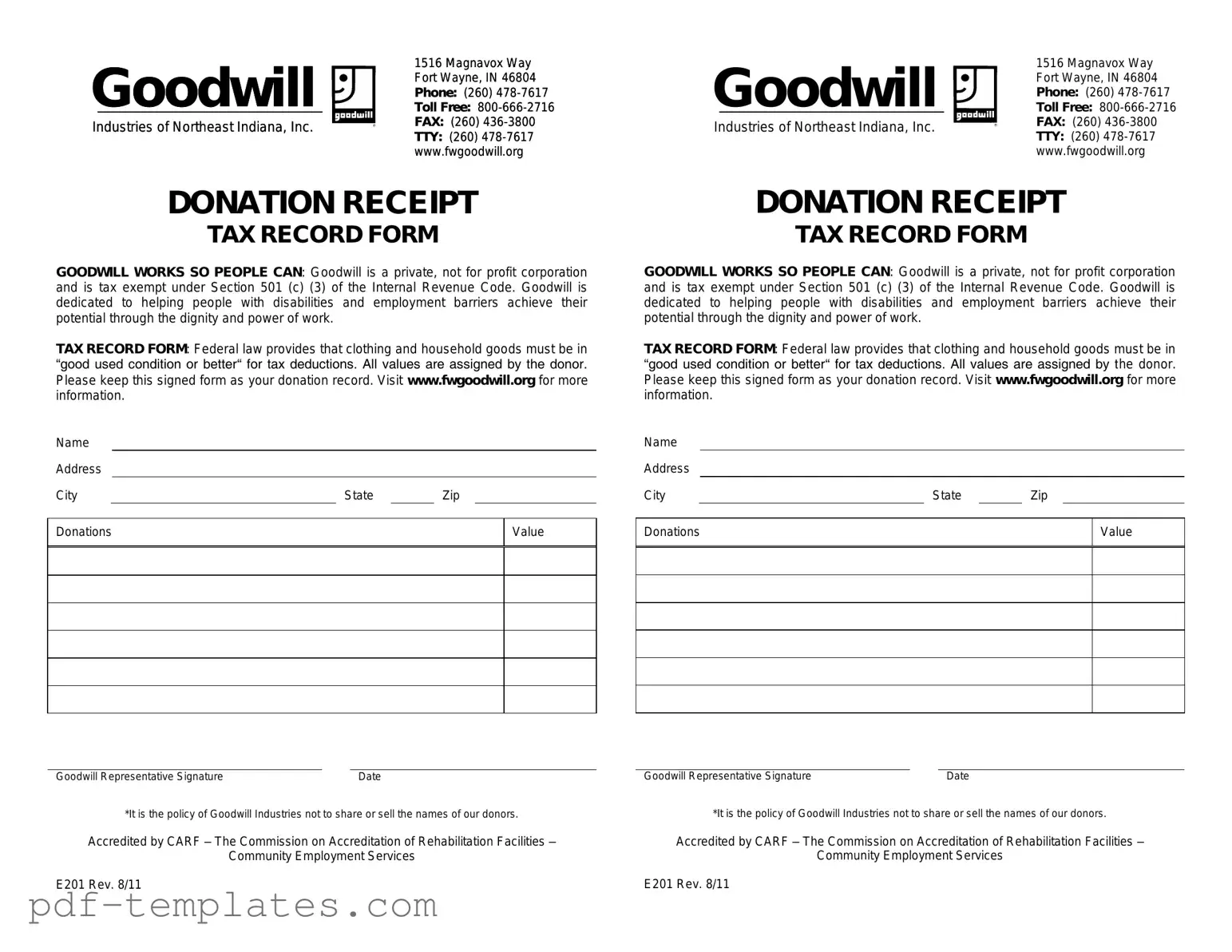The Goodwill donation receipt form shares similarities with the IRS Form 8283, which is used for non-cash charitable contributions. Like the Goodwill receipt, this form provides a record of donations made to qualified organizations. Both documents require detailed descriptions of the donated items and their estimated fair market value. While the Goodwill receipt is typically issued at the point of donation, Form 8283 is often submitted with tax returns to substantiate the claimed deductions, emphasizing the importance of accurate record-keeping for tax purposes.
Another document akin to the Goodwill donation receipt is the Salvation Army donation receipt. This receipt serves a similar purpose, providing donors with proof of their contributions to the organization. It includes details such as the date of the donation, a description of the items given, and the donor's name. Both receipts are essential for individuals seeking to claim tax deductions, as they validate the charitable contributions made throughout the year.
The 501(c)(3) acknowledgment letter is also comparable to the Goodwill receipt. Organizations classified under this designation must provide written acknowledgment for donations exceeding a certain value. This letter includes information about the donor, the date of the donation, and a description of the items. Like the Goodwill receipt, it serves as a formal record for tax purposes, ensuring that donors can substantiate their charitable giving when filing their taxes.
In addition, the donor acknowledgment letter from a local charity functions similarly to the Goodwill receipt. This letter confirms the receipt of donations and may include a description of the items donated and their estimated value. Both documents aim to provide donors with the necessary proof for tax deductions, reinforcing the importance of maintaining accurate records of charitable contributions.
The Form 990, which nonprofit organizations file annually with the IRS, also bears resemblance to the Goodwill donation receipt in terms of financial transparency. While not a receipt per se, Form 990 provides a comprehensive overview of an organization's financial activities, including donations received. This form helps ensure accountability and transparency, allowing donors to understand how their contributions are utilized within the organization, much like the Goodwill receipt confirms the donation process.
The cash donation receipt, which is issued when a donor gives money rather than goods, shares similarities with the Goodwill donation receipt. Both documents serve as proof of the donation and can be used for tax deduction purposes. While the Goodwill receipt details physical items, the cash receipt focuses on monetary contributions, highlighting the diverse ways individuals can support charitable organizations.
The donor intent letter, though less common, can also be compared to the Goodwill donation receipt. This letter outlines the donor's intentions regarding their contributions, whether they are for specific projects or general support. While the Goodwill receipt confirms the donation itself, the intent letter provides context, helping organizations understand how to utilize the donated items or funds effectively.
To ensure a smooth transaction for purchasing firearms, individuals can utilize a Texas firearm bill of sale form, which acts as proof of ownership during the exchange. For a comprehensive understanding and to access the form, please refer to the Texas Firearm Bill of Sale document page.
Lastly, the charitable gift annuity agreement, while more complex, shares a purpose with the Goodwill donation receipt in terms of documenting charitable contributions. This agreement outlines the terms of a donation that provides the donor with fixed payments for life in exchange for a gift to a charity. Both documents serve to formalize the donation process and provide a record for tax purposes, though the gift annuity agreement involves a more intricate arrangement between the donor and the organization.
